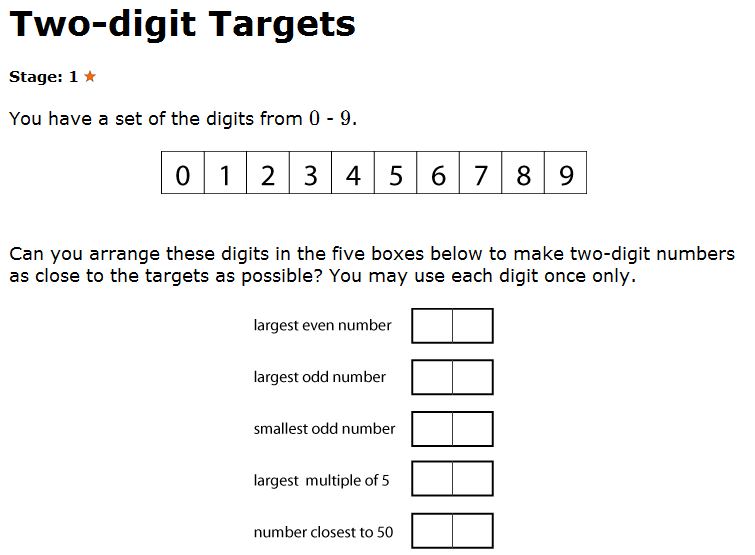Part 1: Problem solving with NRICH

Read the first of two guest posts from Liz Woodham, Primary Coordinator at NRICH, with advice on how their mathematical tasks can be used in the classroom.
In Abacus, we currently link out to a number of NRICH’s enriching mathematical tasks. Whilst these resources are a great “next step” for children who have already grasped key concepts within the core lesson in Abacus, they can also help all children to think mathematically and to become competent problem solvers.
This first blog provides an introduction to problem solving with NRICH, and explores how important it is to choose appropriate tasks. The second will explore how you can structure the problem-solving process, and embed problem solving into every school day.
Becoming a confident and competent problem solver is a complex process that requires a range of skills and experience. As a teacher, you can support this process in three key ways:
- Choosing appropriate tasks
- Structuring the stages of the problem-solving process
- Explicitly and repeatedly providing children with opportunities to develop key problem-solving skills.
Choosing appropriate tasks
Here at NRICH, we offer a wide range of tasks which engage children in the problem-solving process. We want all of our tasks to enable children to explore and work from their own level of understanding, and then build on this towards new understandings. We believe that this approach offers the opportunity for rich, embedded learning.
All of the tasks on the NRICH website are rich tasks, which means they:
- Can be solved in a variety of ways
- Combine fluency with mathematical reasoning
- Encourage children to ask their own questions
- Often start from a relatively closed challenge but have the potential to be opened up
- Can reveal patterns and generalisations
- Encourage collaboration and discussion.
Two-digit Targets is a good example of a rich task. It helps children become fluent with place value and provokes discussions as children try to justify why their arrangement of digits is ‘better’ than anyone else’s.
Some of our rich tasks are also low threshold high ceiling (LTHC). LTHC tasks, such as Maze 100, are suitable for practically anybody to have a go - but they have the potential to really challenge children’s problem-solving and reasoning skills. This means that LTHC tasks are perfect for whole classes. Everyone starts at the same point, but you can drop in further questions as appropriate to challenge those children who grasp the initial ideas quickly, without accelerating them through extra curriculum content.
Some NRICH tasks are games that can be played time and time again, whilst others pose problems or longer investigations. The key is to be clear how you want to use a particular problem to support the development of children’s problem-solving skills. It is tempting to choose a problem that relates to the mathematical content that you have been working on in class. Whilst children need to be fluent with the mathematical content demands of any problem they tackle, it may be more productive to choose a problem that builds on a specific element of problem solving that you are working on as a class, and uses content with which they are very familiar and confident.
Our next post will explore how you can structure the problem-solving process, and embed problem solving into every school day. In the interim, you can access more articles and advice on the NRICH website.
The team at NRICH.